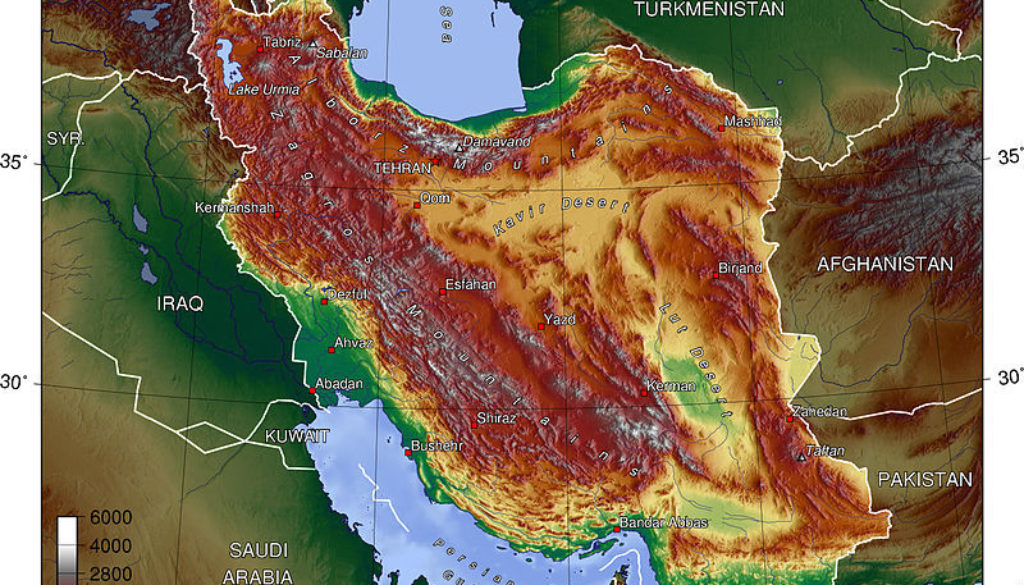Going into Iran? A Bad Idea
In the previous article, we discussed the hazards that the first stage of naval invasion would be for our morale and troops in terms of the losses incurred and the political retribution involved if even one aircraft carrier was sunk. Now, in a war with Iran, it is necessary to understand that Iran is a different bird altogether than from Iraq or Afghanistan.
Terrain-Wise and Military-Wise
![]() When the War on Terror commenced in Afghanistan, the Taliban were little more than a militia. While mountainous, Taliban-led Afghanistan was not able to efficiently utilize the terrain to its fullest extent against an aggressor and the government’s ability to resupply and led its troops was poor at best.
When the War on Terror commenced in Afghanistan, the Taliban were little more than a militia. While mountainous, Taliban-led Afghanistan was not able to efficiently utilize the terrain to its fullest extent against an aggressor and the government’s ability to resupply and led its troops was poor at best.
Iraq was largely flat desert with well-kept highways leading into the interior that helped enable coalition access to key strategic positions, like the capital in the country. Iraq also only had some forty percent of the one million troops that they had a decade earlier. Add the fact that the Iraqi military was both poorly trained and equipped, and the result was obvious. Both wars took about a month to dethrone the Taliban and Saddam, with minimal losses on the American military.
Iran is not any of these things. Iran is a geographic fortress with a well trained, well equipped army twice the size Iraq had at the onset of the War on Terror. Their leadership is a lot better than that of either the Taliban or Suddam’s army combined, and the Iranian military is bigger and than of those aforementioned forces combined.
Iran would not win a war with a determined America, but remember the possible 20,000 casualty rate that the mock Iran war exercise that the U.S had. If 1000 naval personnel are lost in the initial stages before we even hit shore then the political backlash would be catastrophic.
The topography of the land and the lack of any flat land like the deserts, which are not strategically important there, will make the Iran war more difficult than the wars we have been engaged in the Middle East. The cost of natural geographic chokepoints and of securing the roads in Iran will have higher casualty rates than the American public expects.
Holding the Land
After Tehran is taken, the United States will now be tasked with installing a government for people who don’t want us there. No matter how bad a government is, there is no greater unifier than the invasion by a foreign power.
The rise in terrorist attacks, in the forms of suicide bombs and other forms of resistance, will hinder the progress of making Iran stable. Also the fact that all of this occurring means that the U.S military will be stuck in the country for an extended period of time long after the war is over and longer than the public wants.
Another Vietnam...
![]() If these situations occur, then the Iran war could be the Vietnam of our generation, a seemingly endless war fought under dubious pretenses for people who may be better left alone. Iran practices a less stringent form of Islam compared to our ally in Saudi Arabia. It is well possible that the problems that happened in Iraq could become manifold in Iran.
If these situations occur, then the Iran war could be the Vietnam of our generation, a seemingly endless war fought under dubious pretenses for people who may be better left alone. Iran practices a less stringent form of Islam compared to our ally in Saudi Arabia. It is well possible that the problems that happened in Iraq could become manifold in Iran.
Ethnic and religious conflict in a region made unstable by an American invasion is sure to happen with ramifications that will last for decades. Tribes that lost unity due to the dissolution of Iran will cause the country to become a hotbed of secessionist war. The Sunni-Shiite conflict, along with the threat of outside agents like Saudi Arabia exporting its own brand of Islam, possibly by blood, America and Russian conflicts, and gang warfare will devastate the Iran for years to come.
There is not enough reason to go to war with Iran when America is already embroiled in six extra wars. The public dissent and causality rate on our end is not enough to legitimate another conflict we don’t know when we will get out of. Not everything that can be won is worth winning.





